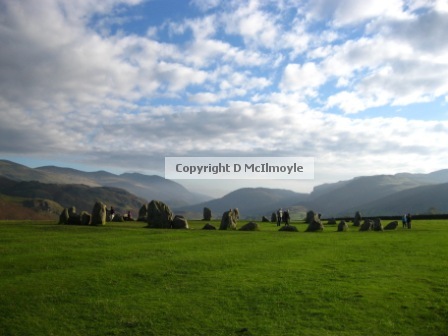I don’t know whether you’ve noticed, but it’s very rare for me to include ghost stories on Esmeralda’s. It’s not that I haven’t looked at a few – always ones supposedly rooted in an historical event – but with one exception1, they don’t pass the simplest test of veracity. Some simply don’t marry up with historical events, like the Claife Crier2, and others, such as the Beckside Boggle3 and Hutton-in-the-Forest’s headless horsewoman4, are demonstrably fiction, with authors, publishing dates and so on.  I’ve also chosen not to spend a lot of time with our assorted otherworldly creatures – dobbies, boggles, barguests, elves, fairies, cappels, hobs and bogarts – partly because there are others tackling these5 but mostly because they’re almost impossible to define. Let’s look at a few attempts at definition by other historians: Henderson6, writing in 1866, suggests that ghosts and ‘bogles’ are interchangeable, although a ‘dobie’ is a ‘mortal heavy sprite’, which appears to be 19th –century Borders code for a ghost that’s none-too-clever. Sullivan7, in 1891, on the other hand, is confident that a ‘dobbie’ is ‘a kind of household fairy’ somewhat like a hobgoblin (and indeed similar to the one in JK Rowling’s Harry Potter series). On the other hand, the more recent (2009) Geoff Holder8 has collected evidence to suggest that both boggles and dobbies are associated with murders and suicides. I, in my turn, have come across a dobby which Continue reading →
I’ve also chosen not to spend a lot of time with our assorted otherworldly creatures – dobbies, boggles, barguests, elves, fairies, cappels, hobs and bogarts – partly because there are others tackling these5 but mostly because they’re almost impossible to define. Let’s look at a few attempts at definition by other historians: Henderson6, writing in 1866, suggests that ghosts and ‘bogles’ are interchangeable, although a ‘dobie’ is a ‘mortal heavy sprite’, which appears to be 19th –century Borders code for a ghost that’s none-too-clever. Sullivan7, in 1891, on the other hand, is confident that a ‘dobbie’ is ‘a kind of household fairy’ somewhat like a hobgoblin (and indeed similar to the one in JK Rowling’s Harry Potter series). On the other hand, the more recent (2009) Geoff Holder8 has collected evidence to suggest that both boggles and dobbies are associated with murders and suicides. I, in my turn, have come across a dobby which Continue reading →








